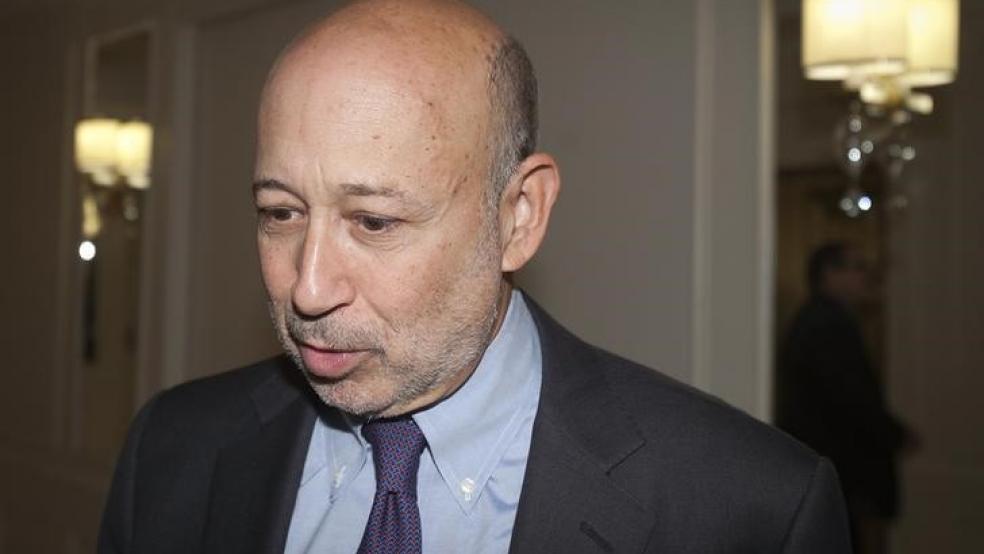NEW YORK (Reuters) - Goldman Sachs Group Inc is trying to convince investors that its business model does not need to change.
On Tuesday morning, Goldman Chief Executive Officer Lloyd Blankfein gave a presentation at a financial services conference that painted the bank as one that earns steadier profits than its peers, and delivers them through sundry business lines.Those ideas run contrary to a common narrative on Wall Street about Goldman: It is good at earning money by trading and investing its own capital, but little else."Most people will tell you Goldman makes almost all its money on trading - I hear it all the time," said Rick Scott, who trades in Goldman shares as chief investment officer at L&S Advisors, an investment firm with $500 million in assets under management. "I like that they're focused on doing one thing very well, but the more diversified your business, the less there's a chance one area will take a big bite out of your earnings when it's disrupted."Goldman executives say the view that the bank is a one-trick pony is misguided, and Blankfein's presentation on Tuesday was sprinkled with factoids that run contrary to market perceptions.It emphasized that more than one-half of its revenues comes from businesses other than trading, and that trading itself is more diverse than it may seem.One slide at the presentation divided Goldman's trading unit into eight components, each of which contributed 8 percent to 19 percent of revenue, on average, since 2010. Another showed that Goldman has squeezed more revenue out of businesses it kept than revenue it lost exiting others due to new regulations. Blankfein stressed that Goldman's investment management business has plenty of room to grow, since it is just a fraction of the size of leading rivals."We're 'breadthy' in capital markets. On the other hand, we're very focused," Blankfein said. "We're breadthy in the context of the set of businesses we choose to be in."He added that Goldman is "unabashedly an investment bank" and that he sees no need to change its business model.Yet Goldman's biggest revenue contributor, bond trading, is in the midst of a decline that is crimping profits across Wall Street, raising questions about how Blankfein will make up for that waning line item.Last year Goldman reported $8.5 billion in revenue from bond trading, down 2 percent from 2013, and down 61 percent from its peak of $21.9 billion in 2009.As that business has shrunk and capital requirements have gone up, Goldman's return-on-equity has dropped to 11.2 percent, less than one-third of its peak performance before the crisis. That metric is important to shareholders because it shows how much profit a bank can earn from their capital.Blankfein and his deputies have refused to offer a return-on-equity target, arguing that regulations are still too unclear. Analysts who spoke to Reuters on Monday said some of their investor clients want Goldman management to outline a specific plan for how the bank will make up for falling bond revenue and drive returns higher."Goldman is saying, we have the right business model, but we're not really sure what the business model's going to look like when all is said and done," said CLSA analyst Mike Mayo. "You're going to lose investors with that pitch."Goldman stock was up 0.2 percent to $182.58. (Editing by Andrew Hay and Jeffrey Benkoe)Goldman is jack-of-all-trades, not master of one: CEO

Carlo Allegri



